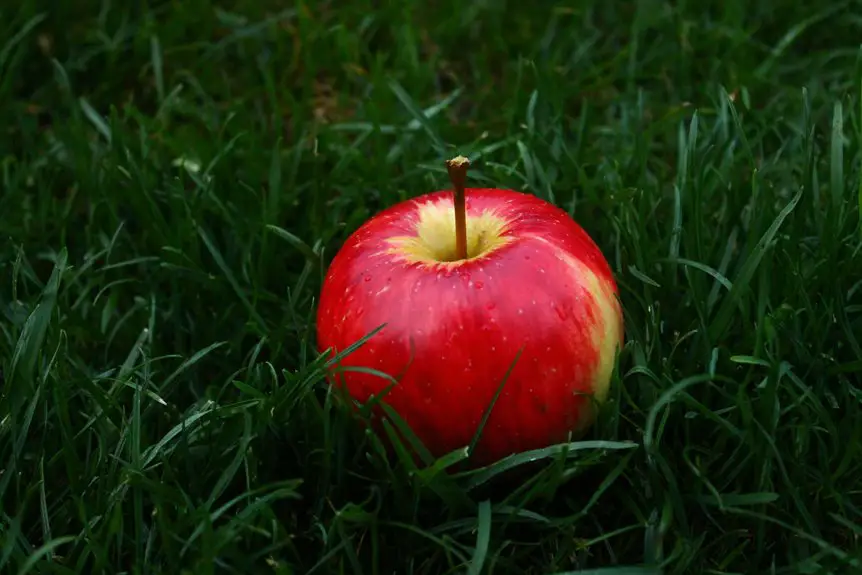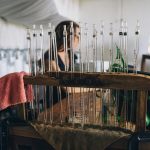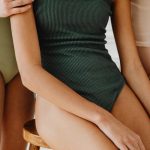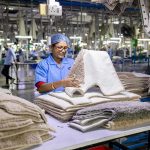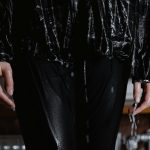You might think all fabrics handle sweat the same, but moisture-wicking fibers take a distinctly smarter approach. They don’t just absorb moisture; they actively pull it away from your skin and spread it out to dry quickly. This subtle yet powerful process keeps you comfortable in ways traditional fabrics can’t. Understanding exactly how these fibers work will change how you choose your activewear — and there’s more to the story than just what meets the eye.
Table of Contents
Key Takeaways
- Moisture-wicking fibers move sweat away from the skin using capillary action through tiny fiber channels for quick drying and comfort.
- Synthetic fibers like polyester are engineered with hydrophilic properties to enhance moisture transport and speed up evaporation.
- Advanced fiber designs include surface grooves and nanotechnology to increase surface area and improve sweat removal efficiency.
- Smart fibers adapt to humidity changes, optimizing moisture management and maintaining user comfort during physical activities.
- These fibers promote breathability and cooling by distributing sweat evenly and facilitating rapid evaporation to prevent dampness.
Understanding the Material Composition of Moisture-Wicking Fibers
Although moisture-wicking fibers come in various types, they all share a common goal: to pull sweat away from your skin and keep you dry.
Moisture-wicking fibers vary but all work to draw sweat away and keep you comfortably dry.
You’ll find natural fibers like wool and synthetic ones such as polyester and nylon, each designed to manage moisture levels differently.
Synthetic fiber types are engineered to move sweat quickly from your skin to the fabric’s surface, where it evaporates fast.
Natural fibers absorb some moisture but still dry efficiently, offering comfort and breathability.
When choosing moisture-wicking fabrics, understanding the fiber types helps you pick the best option for your activity and environment.
This knowledge guarantees you stay comfortable and dry, whether you’re working out, hiking, or just dealing with daily sweat.
The Science Behind Moisture Capture and Transport
When sweat touches your skin, moisture-wicking fibers actively pull it away through capillary action, transporting it to the fabric’s surface where it can evaporate quickly. This process relies on moisture gradients, which drive liquid from wetter to drier areas. Fiber hydrophilicity plays an essential role, as fibers with higher affinity for water capture sweat efficiently.
| Key Concept | Explanation |
|---|---|
| Capillary Action | Moves moisture along tiny fiber channels |
| Moisture Gradients | Create flow from skin to fabric surface |
| Fiber Hydrophilicity | Determines how well fibers attract water |
| Transport Efficiency | Guarantees quick movement to evaporation sites |
Understanding these factors helps you appreciate how fabrics keep you dry and comfortable during activity.
How Evaporation Enhances Comfort and Performance
When moisture evaporates from your skin, it creates a cooling effect that keeps you comfortable.
This process speeds up moisture drying, so you stay dry even during intense activity.
Plus, evaporation boosts breathability, allowing better airflow to help regulate your body temperature.
Evaporation’s Cooling Effect
Because your body produces sweat to cool down, evaporation plays an essential role in enhancing comfort and performance.
When sweat reaches your skin’s surface, the evaporation process begins as liquid sweat turns into vapor, pulling heat away from your body. This phase change absorbs energy, delivering significant cooling benefits that prevent overheating.
Moisture-wicking fibers help by spreading sweat evenly across the fabric, speeding up evaporation. As a result, you feel cooler and drier, which helps maintain your focus and endurance during physical activity.
Understanding how evaporation’s cooling effect works shows why moisture-wicking clothing is more than just comfortable—it actively supports your body’s natural temperature regulation, helping you perform at your best.
Accelerated Moisture Drying
Although sweat is your body’s natural cooling mechanism, moisture-wicking fibers accelerate drying by pulling sweat away from your skin and spreading it across the fabric’s surface.
This process reduces moisture retention, preventing the fabric from becoming saturated and heavy. By maximizing drying efficiency, these fibers help sweat evaporate faster, keeping you dry and comfortable.
When moisture evaporates quickly, your body cools down more effectively, supporting better performance during physical activity. You’ll notice less clinginess and irritation because the fabric stays lighter and drier.
This rapid moisture removal also helps regulate your body temperature, so you can focus on your workout or daily tasks without distraction.
In short, accelerated moisture drying guarantees you stay fresh and comfortable, even during intense exertion.
Breathability Boosts Airflow
As moisture evaporates from your skin, breathable fabrics enhance airflow by allowing air to circulate freely through the fibers.
This circulation improves airflow dynamics, which means fresh air replaces humid air near your skin, speeding up evaporation. Effective ventilation strategies built into moisture-wicking fibers guarantee that this exchange happens continuously, maintaining a cool, dry microclimate.
When airflow isn’t restricted, you feel less clammy and more comfortable, especially during intense activities. These fabrics don’t just pull moisture away; they actively promote air movement to optimize evaporation.
Physical and Chemical Modifications to Optimize Fiber Function
You can improve moisture-wicking fibers by engineering surface grooves that channel sweat away from your skin.
Adjusting the polymer to be more hydrophilic also boosts how quickly moisture spreads and evaporates.
Let’s explore how these physical and chemical tweaks optimize fiber performance.
Surface Groove Engineering
When you want fibers to manage moisture effectively, surface groove engineering plays an essential role. By carefully designing the surface texture and groove patterns, fibers can channel sweat away from your skin, speeding up evaporation and keeping you dry.
These grooves increase the surface area, allowing moisture to spread evenly and reduce clinging. Engineers tweak the physical structure without altering the fiber’s core, ensuring comfort and performance.
Here’s what surface groove engineering focuses on:
- Creating micro and nano-scale groove patterns
- Optimizing groove depth and spacing for capillary action
- Enhancing surface texture to boost moisture transport
- Balancing groove design for breathability and durability
- Applying physical modifications to maintain softness and flexibility
This precise engineering turns simple fibers into moisture-wicking heroes.
Polymer Hydrophilic Enhancements
Beyond shaping the fiber’s surface, improving moisture management also involves modifying the polymer itself to attract water more effectively.
You can enhance the hydrophilic properties of fibers by adjusting their polymer structures through physical or chemical modifications. Introducing polar groups or incorporating hydrophilic monomers into the polymer chain increases water affinity, allowing fibers to absorb and transport moisture efficiently.
You might also use grafting techniques to attach hydrophilic molecules directly onto the polymer backbone, boosting moisture absorption without compromising strength. These changes guarantee the fiber actively pulls moisture away from your skin, promoting quicker evaporation and dryness.
Advanced Fiber Technologies Driving Moisture Management
Innovations in fiber technology have transformed how fabrics handle moisture, making them more effective at keeping you dry and comfortable.
Fiber technology advances have revolutionized moisture management, enhancing fabric comfort and dryness.
These fiber innovations in performance textiles focus on enhancing moisture transport and evaporation. You’ll find fibers engineered with specialized cross-sections that increase surface area for quicker wicking. Some incorporate nanotechnology to create channels that draw sweat away from your skin instantly.
Others use hydrophilic finishes that boost absorbency without adding weight. Advanced polyester blends now integrate moisture-sensitive polymers that adapt to your activity level, optimizing breathability.
Key advanced fiber technologies include:
- Hollow fibers for lightweight moisture transport
- Nano-engineered fiber surfaces
- Hydrophilic polymer coatings
- Smart fibers reacting to humidity changes
- Cross-section designs maximizing capillary action
These breakthroughs guarantee your gear performs reliably in any condition.
Practical Applications in Apparel and Activewear
As you choose your next workout outfit, you’ll notice moisture-wicking fibers play a critical role in keeping you dry and comfortable.
These fibers are woven into performance apparel designed specifically for an active lifestyle, helping to pull sweat away from your skin and speed up evaporation.
Whether you’re hitting the gym, running trails, or practicing yoga, moisture-wicking fabrics prevent that sticky, uncomfortable feeling, allowing you to focus on your activity.
Beyond sportswear, these fibers are also used in everyday clothing, making them ideal for anyone who values comfort during long, busy days.
Frequently Asked Questions
Can Moisture-Wicking Fabrics Cause Skin Irritation or Allergies?
You might experience skin irritation or allergies if you have sensitive skin, as moisture-wicking fabrics can sometimes contain allergy triggers like dyes or chemicals. Always check labels and test fabrics to avoid discomfort or reactions.
How Do Moisture-Wicking Fibers Compare in Environmental Impact?
You might think moisture-wicking fibers single-handedly save the planet! In reality, their impact varies—some use sustainable materials and eco-friendly processes, while others rely on synthetic fibers with a bigger environmental footprint you should consider.
Are Moisture-Wicking Clothes Effective Without Washing After Each Use?
You can wear moisture-wicking clothes a few times without washing, but odor retention may increase. To keep them fresh, you’ll need proper fabric care, like airing out and spot cleaning between uses.
Can Moisture-Wicking Technology Be Applied to Non-Clothing Textiles?
Back in the days of the telegram, you’d be amazed to know moisture-wicking applications extend beyond clothes. You can find non-clothing textiles like sports gear, upholstery, and even bandages using this tech to keep things dry and comfy.
How Durable Are Moisture-Wicking Properties After Multiple Washes?
You’ll find fiber longevity varies, but quality moisture-wicking fabrics maintain wash durability well. After multiple washes, they generally keep their properties, though following care instructions helps you preserve performance and extend your garment’s lifespan.
- The Use of Nonwovens in Construction and Civil Engineering - July 11, 2025
- The Use of Nonwovens in Construction and Civil Engineering - July 11, 2025
- The Use of Nonwovens in Construction and Civil Engineering - July 11, 2025

